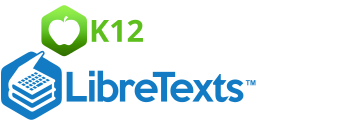8.3: The State of My Plate COY
- Page ID
- 2426
\( \newcommand{\vecs}[1]{\overset { \scriptstyle \rightharpoonup} {\mathbf{#1}} } \)
\( \newcommand{\vecd}[1]{\overset{-\!-\!\rightharpoonup}{\vphantom{a}\smash {#1}}} \)
\( \newcommand{\id}{\mathrm{id}}\) \( \newcommand{\Span}{\mathrm{span}}\)
( \newcommand{\kernel}{\mathrm{null}\,}\) \( \newcommand{\range}{\mathrm{range}\,}\)
\( \newcommand{\RealPart}{\mathrm{Re}}\) \( \newcommand{\ImaginaryPart}{\mathrm{Im}}\)
\( \newcommand{\Argument}{\mathrm{Arg}}\) \( \newcommand{\norm}[1]{\| #1 \|}\)
\( \newcommand{\inner}[2]{\langle #1, #2 \rangle}\)
\( \newcommand{\Span}{\mathrm{span}}\)
\( \newcommand{\id}{\mathrm{id}}\)
\( \newcommand{\Span}{\mathrm{span}}\)
\( \newcommand{\kernel}{\mathrm{null}\,}\)
\( \newcommand{\range}{\mathrm{range}\,}\)
\( \newcommand{\RealPart}{\mathrm{Re}}\)
\( \newcommand{\ImaginaryPart}{\mathrm{Im}}\)
\( \newcommand{\Argument}{\mathrm{Arg}}\)
\( \newcommand{\norm}[1]{\| #1 \|}\)
\( \newcommand{\inner}[2]{\langle #1, #2 \rangle}\)
\( \newcommand{\Span}{\mathrm{span}}\) \( \newcommand{\AA}{\unicode[.8,0]{x212B}}\)
\( \newcommand{\vectorA}[1]{\vec{#1}} % arrow\)
\( \newcommand{\vectorAt}[1]{\vec{\text{#1}}} % arrow\)
\( \newcommand{\vectorB}[1]{\overset { \scriptstyle \rightharpoonup} {\mathbf{#1}} } \)
\( \newcommand{\vectorC}[1]{\textbf{#1}} \)
\( \newcommand{\vectorD}[1]{\overrightarrow{#1}} \)
\( \newcommand{\vectorDt}[1]{\overrightarrow{\text{#1}}} \)
\( \newcommand{\vectE}[1]{\overset{-\!-\!\rightharpoonup}{\vphantom{a}\smash{\mathbf {#1}}}} \)
\( \newcommand{\vecs}[1]{\overset { \scriptstyle \rightharpoonup} {\mathbf{#1}} } \)
\( \newcommand{\vecd}[1]{\overset{-\!-\!\rightharpoonup}{\vphantom{a}\smash {#1}}} \)
\(\newcommand{\avec}{\mathbf a}\) \(\newcommand{\bvec}{\mathbf b}\) \(\newcommand{\cvec}{\mathbf c}\) \(\newcommand{\dvec}{\mathbf d}\) \(\newcommand{\dtil}{\widetilde{\mathbf d}}\) \(\newcommand{\evec}{\mathbf e}\) \(\newcommand{\fvec}{\mathbf f}\) \(\newcommand{\nvec}{\mathbf n}\) \(\newcommand{\pvec}{\mathbf p}\) \(\newcommand{\qvec}{\mathbf q}\) \(\newcommand{\svec}{\mathbf s}\) \(\newcommand{\tvec}{\mathbf t}\) \(\newcommand{\uvec}{\mathbf u}\) \(\newcommand{\vvec}{\mathbf v}\) \(\newcommand{\wvec}{\mathbf w}\) \(\newcommand{\xvec}{\mathbf x}\) \(\newcommand{\yvec}{\mathbf y}\) \(\newcommand{\zvec}{\mathbf z}\) \(\newcommand{\rvec}{\mathbf r}\) \(\newcommand{\mvec}{\mathbf m}\) \(\newcommand{\zerovec}{\mathbf 0}\) \(\newcommand{\onevec}{\mathbf 1}\) \(\newcommand{\real}{\mathbb R}\) \(\newcommand{\twovec}[2]{\left[\begin{array}{r}#1 \\ #2 \end{array}\right]}\) \(\newcommand{\ctwovec}[2]{\left[\begin{array}{c}#1 \\ #2 \end{array}\right]}\) \(\newcommand{\threevec}[3]{\left[\begin{array}{r}#1 \\ #2 \\ #3 \end{array}\right]}\) \(\newcommand{\cthreevec}[3]{\left[\begin{array}{c}#1 \\ #2 \\ #3 \end{array}\right]}\) \(\newcommand{\fourvec}[4]{\left[\begin{array}{r}#1 \\ #2 \\ #3 \\ #4 \end{array}\right]}\) \(\newcommand{\cfourvec}[4]{\left[\begin{array}{c}#1 \\ #2 \\ #3 \\ #4 \end{array}\right]}\) \(\newcommand{\fivevec}[5]{\left[\begin{array}{r}#1 \\ #2 \\ #3 \\ #4 \\ #5 \\ \end{array}\right]}\) \(\newcommand{\cfivevec}[5]{\left[\begin{array}{c}#1 \\ #2 \\ #3 \\ #4 \\ #5 \\ \end{array}\right]}\) \(\newcommand{\mattwo}[4]{\left[\begin{array}{rr}#1 \amp #2 \\ #3 \amp #4 \\ \end{array}\right]}\) \(\newcommand{\laspan}[1]{\text{Span}\{#1\}}\) \(\newcommand{\bcal}{\cal B}\) \(\newcommand{\ccal}{\cal C}\) \(\newcommand{\scal}{\cal S}\) \(\newcommand{\wcal}{\cal W}\) \(\newcommand{\ecal}{\cal E}\) \(\newcommand{\coords}[2]{\left\{#1\right\}_{#2}}\) \(\newcommand{\gray}[1]{\color{gray}{#1}}\) \(\newcommand{\lgray}[1]{\color{lightgray}{#1}}\) \(\newcommand{\rank}{\operatorname{rank}}\) \(\newcommand{\row}{\text{Row}}\) \(\newcommand{\col}{\text{Col}}\) \(\renewcommand{\row}{\text{Row}}\) \(\newcommand{\nul}{\text{Nul}}\) \(\newcommand{\var}{\text{Var}}\) \(\newcommand{\corr}{\text{corr}}\) \(\newcommand{\len}[1]{\left|#1\right|}\) \(\newcommand{\bbar}{\overline{\bvec}}\) \(\newcommand{\bhat}{\widehat{\bvec}}\) \(\newcommand{\bperp}{\bvec^\perp}\) \(\newcommand{\xhat}{\widehat{\xvec}}\) \(\newcommand{\vhat}{\widehat{\vvec}}\) \(\newcommand{\uhat}{\widehat{\uvec}}\) \(\newcommand{\what}{\widehat{\wvec}}\) \(\newcommand{\Sighat}{\widehat{\Sigma}}\) \(\newcommand{\lt}{<}\) \(\newcommand{\gt}{>}\) \(\newcommand{\amp}{&}\) \(\definecolor{fillinmathshade}{gray}{0.9}\)Learn:
- What MyPlate is
- The food groups that make a balanced meal.
Giveaway:
A snack size fruit or vegetable.
Tools:
- Signage and handouts (e.g. Myplate)/Plates or Napkins
- Images or props of food in all 5 food groups.
- MyPlate print out on a board or plate
- Fruits or vegetables in a container (strawberries, blueberries, carrots, cherry tomatoes etc.)
- Dip in a container (yogurt or ranch)
- Music & speakers (optional)
- Feedback survey, pencils, and collection box
Set-up:
- Display signage/ poster to highlight the goal of your demo.
- spread cutout or props of food from all 5 food groups.
- Put an image of MyPlate on a plate/ board as a guide fro participants to use
- Optional: Play music to attract people to your demo.
Activity:
- Facilitator explain to the participants how to create a meal using the food images/ cutouts that follow the MyPlate guideline, with one item from each of the 5 food groups. Encourage them to create a meal they would make for themselves.
- Have participants show the meals they created and check to see they have a good item from each food groups. Once participated, provide participants fruits/ vegetables to take or eat.
- After the activity, ask participants what they could eat fro breakfast/lunch/dinner that would follow the MyPlate guidelines.
- Ask participants to complete the Feedback survey
Talking Points:
- What is Myplate? It is guide to balance your plate or bowl with the five food groups: fruits, vegetables, grains, protein, and dairy.
- Explain the five food groups: fruits, vegetables, gains, proteins and dairy from suggested information
- As participants the following questions:
- What are the 5 main food groups?
- What are the recommended amounts of each food group that you should consume in a day?
- How can you follow the MyPlate guidelines at school or at home?

Suggested Information for Café O Yea:
- MyPlate is a guide for how to balance your plate, cup and bowl with the five food groups to maintain a healthy eating pattern of all five food groups which are fruits, vegetables, gains, protein, and dairy. Use this visual when placing food on your plate or in your bowl as a way to be sure you're including all five food groups in the appropriate proportion.
- Fruits: Naturally low in fat, sodium, and calories and have important nutrients (USDA, 2017). The amount of fruits on your plate should be a little less than a quarter of your plate.
Examples include apples, bananas, berries, melon, oranges, lemon, cherries, and pineapples. May be 100% juice, fresh, canned, frozen, or died, and may be whole, cut-up, or pureed.
- Vegetables: Naturally low in fat and calories and have important nutrients (USDA, 2017). The amount of vegetables should be a little more than a quarter of the plate. Examples include spinach, broccoli, peppers, squash, carrots, tomatoes, corn, avocado, cucumbers, and peas. May be 100% vegetable juice, raw or cooked; fresh, frozen, canned, or dried/ dehydrates; and may be whole, cut-up, or mashed.
- Grains: Any food made from wheat, rice, oats, cornmeal, barley or another cereal grain is a grain product (USDA, 2016). The amount of grain should be a little more than a quarter of the plate. Examples include bread, pasta, oatmeal, breakfast cereals, tortillas, and grits.
- Protein: Provides your body with the energy for your muscles and tissues to grow and heal and keeps your immune system strong (USDA, 2016). The amount of protein should be a little less than a quarter of the plate.
- Examples include chicken, turkey, ham, beef, eggs, salmon, tuna, tofu, edamame, hummus, lentils, peanut butter, almonds, and sunflower seeds.
- Dairy: Help build your bones and teeth and maintains bone mass (USDA, 2016). Place your dairy off to the side of the plate.
Examples include yogurt, cheese, and milk.
- Recipes that may have 3 or more food groups
Resources:
- United States Department of Agriculture. (2017). MyPlate. Retrieved From: www.choosemyplate.gov/MyPlate.
- United Sates Department of Agriculture. (2017). All about the fruit/vegetable/grains/proteins/dairy group. Retrieved From: https://www.choosemyplate.gov/fruit.
- https://www.choosemyplate.gov/vegetables.
- https://www.choosemyplate.gov/grains.
- https://www.choosemyplate.gov/protein-foods.
- http://www.choosemyplate.gov/dairy.
- United Sates Department of Agriculture. (2017). A brief history of USDA food guides. www.choosemyplate.gov/brief-...da-food-guides.

